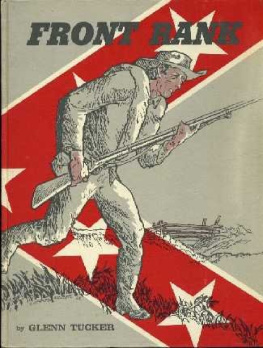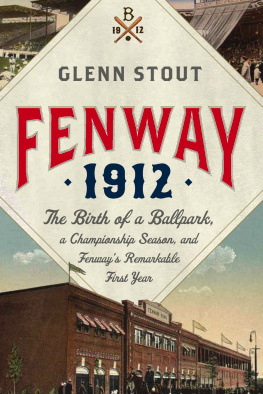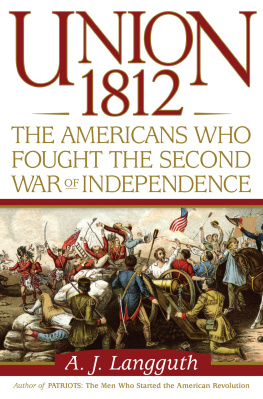This edition is published by Papamoa Press www.pp-publishing.com
To join our mailing list for new titles or for issues with our books papamoapress@gmail.com
Or on Facebook
Text originally published in 1954 under the same title.
Papamoa Press 2017, all rights reserved. No part of this publication may be reproduced, stored in a retrieval system or transmitted by any means, electrical, mechanical or otherwise without the written permission of the copyright holder.
Publishers Note
Although in most cases we have retained the Authors original spelling and grammar to authentically reproduce the work of the Author and the original intent of such material, some additional notes and clarifications have been added for the modern readers benefit.
We have also made every effort to include all maps and illustrations of the original edition the limitations of formatting do not allow of including larger maps, we will upload as many of these maps as possible.
Poltroons and Patriots
A Popular Account of the War of 1812
By
GLENN TUCKER
Maps by W. T. Tucker
Volume II
LIST OF ILLUSTRATIONS
Volume II
General Andrew Jackson
The United States Capitol after the Fire of August 24, 1814
Jackson Quelling the Mutiny
Weatherford Surrendering to Jackson
Washington as It Looked during the War of 1812
The Presidents House in 1816, Still Showing Traces of the Fire
American Sloops Growler and Eagle Chasing Three British Gunboats
Macdonoughs Victory on Lake Champlain
Scenes in the Capture of Washington
The Death of Ross, at Baltimore
The Capture of American Gunboats on Lake Borgne
The Battle of New Orleans
BATTLE MAPS
Volume II
The Creek War Theater
The Battle of Horseshoe Bend
The Chesapeake Bay Theater
The Battle of Bladensburg
The Battle of Lake Champlain
The Battle of Lake Champlain
The Battle of New Orleans
CHAPTER TWENTY-ONE MIST-TAKING CANADA
There had been another humiliating disaster on the Niagara borderColonel Charles G. Boerstler, of the 14 th U.S. Infantry Regiment, had surrendered in an affair at Beaver Dams, about seventeen miles from Fort George.
Boerstler had taken 540 men and two fieldpieces on the simple assignment of destroying an enemy storehouse. On June 24, 1813, when he was near St. Davids, he was attacked by 260 Indians. He fought them off, but they caused him to abandon the purpose of his expedition. Boerstler called on Dearborn for reinforcements and began a retreat. Lieutenant James Fitzgibbon, with fifty men of the British 49 th Infantry, boldly took a stand in front of the Americans and, seeing their confusion, demanded they surrender. Boerstler outnumbered the British regulars more than ten to one, but he was so distracted and fearful that more British were coming up that he complied.
News of this latest ignominy reached Washington on July 6 and caused a sensation in the lobby of the House of Representatives. Speaker Clay sent Representative Charles J. Ingersoll to call on Madison and demand Dearborns dismissal. Madison was willing to follow the recommendation of Congress. He and Armstrong had been thinking along these lines for some time, and Armstrong had already, in early March, written Wilkinson about replacing Dearborn. Orders were issued immediately after the arrival of Clays agent and on July 15, 1813, Dearborn left the Niagara border.
1.
When James Wilkinson finally reported for duty as commander of the Northern armies, Secretary of War Armstrong kept him in Washington eleven days discussing the Canadian campaign. Then the Secretary of War and the general rode together to the Northern theater for the beginning of the grand operations. They reached Sackets Harbor on August 20, 1813, and Wilkinson took over the command which Dearborn had yielded more than a month earlier.
As the two blustering strategists, Armstrong and Wilkinson, rode north, having no more confidence in each other than their respective records justified, they mapped out a series of movements that made up one of the most extraordinary of American military campaigns.
They fell to quarreling almost at once. Wilkinson wanted to clean up the Niagara frontier and move west to the capture of Malden. He apparently believed Harrison could not be counted on. Armstrong thought the war to the west would merely wound the tail of the lion, the heart of the beast being Montreal.
Wilkinson then wanted to descend like lightning with our whole force on Kingston. Armstrong also wanted to capture Kingston, but the method seemed more important to each than the end. More than a month was devoted to wrangling. The plan that eventually evolved was for Wilkinson to board his army on boats and move down the St. Lawrence, effect a juncture with Wade Hampton, who had assumed command in the Lake Champlain area, and march into Montreal.
Wilkinson commanded an army of from 12,000 to 15,000 men, including Hamptons force of 4,000. Hampton would neither speak to his commander nor receive orders from him. When he learned that he had been placed under an officer of Wilkinsons notorious reputation, he wrote to Armstrong that his own command was separate from Wilkinsons, but if such were not the case, his resignation was therewith rendered. No action was taken on the resignation, nor was there prospect of harmonious co-operation between the two wings of the American army. In order to placate Hampton, Secretary Armstrong agreed that Wilkinsons orders should be relayed to Hampton through the War Department. He set up a War Department office at Sackets Harbor partly to handle this exchange. A second motive, it later developed, was that Armstrong hoped he could conduct operations free from President Madisons close supervision.
Wilkinson visited Fort George and nearly cleared the Niagara border of troops in order to concentrate a sizable army at Sackets Harbor. He left Colonel Scott in command at Fort George. After Harrison had defeated Proctor at the Thames the British had withdrawn temporarily from the Niagara area and taken a defensive position at Burlington Heights on Lake Ontario. Scott consequently marched his 800 regulars across New York to Utica, where he encountered Secretary Armstrong and obtained permission to fall in with Wilkinson at Ogdensburg.
This left Fort George and the Niagara border under the command of Brigadier General George McClure, of the New York militia. In the grand movement against Montreal, no one was giving this frontier much attention.













